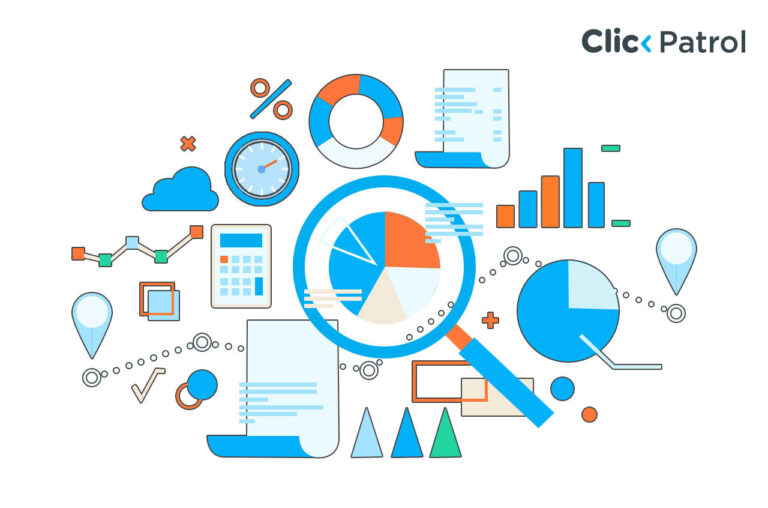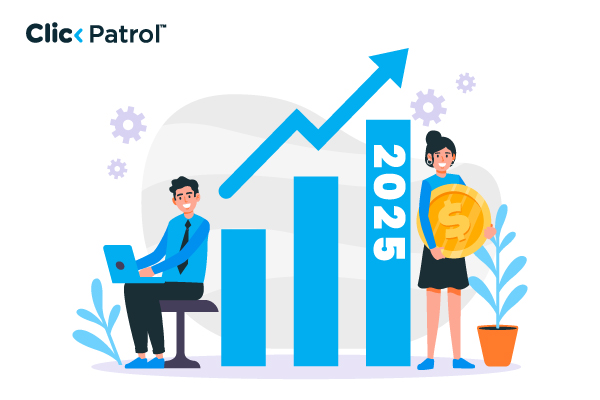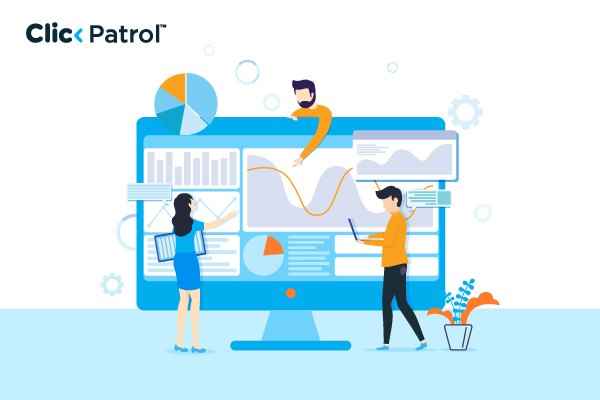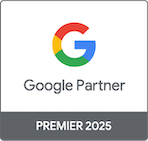
Optimization score 2025: SEO, UX & CRO tactics to boost your website
Abisola Tanzako | Aug 20, 2025

Table of Contents
- What is an optimization score?
- Why optimization score matters for SEO and PPC
- PPC benefits
- How to improve SEO: On-Page, Off-Page & technical tips
- How to improve your optimization score
- Step 1: Conduct a site audit
- Step 2: Optimize for speed
- Step 3: Enhance mobile experience
- Step 4: Improve content quality
- Step 5: Build high-quality backlinks
- Step 6: Optimize PPC campaigns
- Step 7: Monitor and iterate
- Tools to measure and enhance the optimization score
- Top CRO tools for website optimization in 2025
- 1. Google Optimize (via Firebase A/B Testing)
- 2. Optimizely
- 3. VWO (Visual Website Optimizer)
- 4. Hotjar
- 5. Crazy Egg
- 6. Unbounce
- 7. Convert.com
- 8. Microsoft Clarity
- 9. FullStory
- 10. HubSpot A/B testing tools
- Unlock your website’s full potential with optimization score
- FAQ
Sites optimized for UX and SEO convert up to 2.5x more visitors (Forrester, 2024). A high optimization score is essential to help companies dominate the search engine results pages (SERPs) and generate organic traffic.
An optimization score measures the compatibility of a site or advertising campaign with the best possible practices to influence performance, visibility, and user interaction.
Forbes also highlights that SEO drives 53% of website traffic, making it essential for digital success.
This guide explores what an optimization score is, its importance, how to improve it, and current optimization trends.
What is an optimization score?
Optimization score is a metric that determines how closely a website, web page, or digital campaign follows best practices regarding performance, user experience, and exposure.
In Google Ads, the optimization score measures how effectively a campaign applies Google’s recommendations to boost conversions and ROI.
Why optimization score matters for SEO and PPC
The higher the optimization score, the more it improves the performance of SEO and pay-per-click (PPC) campaigns.
This is what makes it a game-changer: SEO benefits:
1. Higher SERP rankings: Search engines prefer sites that offer quick, relevant, and comfortable experiences.
According to a 2023 study by Forbes, 75% of users do not scroll beyond the initial results page in a search, underscoring the importance of high ranking in searches.
2. Organic traffic growth: According to Statista, 53% of inbound website traffic is organic search, and optimized sites are more likely to attract this traffic.
3. Improved user experience: The optimization increases the site speed, user navigation, and the quality of content, thereby lowering bounces and raising the dwell time.
PPC benefits
More optimized Ad performance: Optimized Google Ads with a high optimization score translates to a better quality score, reduced cost-per-click (CPC), and increased ad placements.
Increased ROI: Optimized campaigns can reach the correct target audience with relevant advertisements, improving ROI. Statista data shows that firms that optimize their PPC campaigns achieve an average ROI of 117%.
How to improve SEO: On-Page, Off-Page & technical tips
Your optimization score is based on several factors, including technical, on-page, and off-page factors.
Areas of concentration:
Technical SEO
1. Page speed: Core Web Vitals by Google focuses on metrics such as Largest Contentful Paint (LCP) and Cumulative Layout Shift (CLS).
A 2025 Statista report shows that 40% of users leave a site if the website takes longer than three seconds to load.
2. Mobile friendliness: In 2023, the number of mobile-optimized websites is 59.5%, making them non-negotiable.
3. Site security: HTTPS is a ranking factor, and 70% of voice search outcomes are secure site results.
On-Page SEO
1. Keyword optimization: Long-tail keywords target specific traffic. According to Statista, 50% of search requests contain four or more words.
2. Content quality: According to Forbes, long-form content (1,890+) ranks higher on the Google first page.
3. Meta tags: Meta description and title tags are optimized to increase click-through rates (CTR). 63% of Google meta descriptions and short and keyphrase-intensive tags are rewritten.
Off-Page SEO
1. Backlinks: According to Forbes, high-ranking pages average 200 backlinks.
2. Local SEO: Local intent is present in 46% of Google searches, making optimizing your Google Business Profile necessary.
PPC-specific factors
1. Ad relevance: Ads should correspond with the intent of the users and the content of the landing pages.
2. Landing page experience: Quality Score is enhanced by fast, relevant landing pages.
3. Targeting: An accurate definition of the audience increases the campaign’s effectiveness.
How to improve your optimization score
You will need to develop a plan to increase your optimization score. Here is how to do it step by step:
Step 1: Conduct a site audit
- Tools such as Google Search Console, SEMrush, or Ahrefs can help you determine the causes of problems with your score.
- Test-run broken links, slow pages, and missing meta tags.
Step 2: Optimize for speed
- Minimize the size of images and implement browser caches.
- Latency can be reduced with a content delivery network ( CDN ).
- Compress CSS, JavaScript, and HTML code.
Step 3: Enhance mobile experience
- Use a responsive design that fits perfectly on every screen size.
- Make navigation so easy and make buttons large and touchable.
- Measure and test results using Google Mobile-Friendly Test.
Step 4: Improve content quality
- Design the content to be more detailed, value-driven, and focused on long-tail keywords.
- Schema markup can increase visibility in the SERP.
- Research from 2025 indicates that pages that use schema markup enjoy a 40% increase in CTR.
- Post videos, and they bring 157% more search visitors.
Step 5: Build high-quality backlinks
a.) Write a guest post on credible blogs on your topic.
b.) Make info and statistics shareable.
c.) Take advantage of local citations of locally based businesses.
Step 6: Optimize PPC campaigns
a.) Implement recommendations of Google Ads, including adding negative keywords or ad groups.
b.) A/B test the ad copy and landing pages to increase relevance.
c.) Dynamic keyword insertion should be applied to match ads and search queries.
Step 7: Monitor and iterate
a.) Measure the optimization score regularly and adjust the strategy based on performance data.
b.) Check traffic, bounce rate, and conversion using Google Analytics.
Tools to measure and enhance the optimization score
Many tools could assist you with measuring and upgrading your optimization score:
- Google PageSpeed Insights: Tests the page load speed and suggests how to optimize it.
- Google Ads optimization score: Makes campaign-based suggestions.
- SEMrush: Makes site audits and monitors the rankings of keywords.
- Ahrefs: Checks the backlink profile and content gap.
- All in One SEO (AIOSEO): Makes on-page optimization very easy on WordPress.
- Screaming Frog: Crawls websites to detect technical problems.
Top CRO tools for website optimization in 2025
Here are the top CRO (Conversion Rate Optimization) tools for website optimization in 2025, selected for their reliability,
innovation, and the ability to improve user experience and conversion performance:
1. Google Optimize (via Firebase A/B Testing)
a.) Best for: Basic A/B and multivariate testing (especially for GA4 users)
b.) Why it is great: Seamless integration with Google Analytics, Firebase, and BigQuery.
Though the standalone Google Optimize sunset, Firebase A/B Testing continues to provide similar functionality for web and app experiments.
2. Optimizely
a.) Best for: Enterprise-level testing and personalization
b.) Why it is great: Robust experimentation platform with advanced targeting, server-side testing, and real-time personalization.
3. VWO (Visual Website Optimizer)
a.) Best for: Mid-sized businesses and marketers
b.) Why it is great: Easy visual editor, strong heatmaps, session recording, A/B testing, and funnel analysis all in one platform.
4. Hotjar
a.) Best for: Visual behavior analysis
b.) Why it is great: It offers heat maps, session replays, feedback polls, and surveys to understand user behavior and improve UX.
5. Crazy Egg
a.) Best for: Fast insights on user behavior
b.) Why it is great: Scroll maps, click tracking, and simple A/B testing tools for small to medium websites.
6. Unbounce
a.) Best for: Landing page optimization
b.) Why it is great: Drag-and-drop builder, AI copy assistant, and smart traffic routing to test which landing pages convert best.
7. Convert.com
a.) Best for: Privacy-conscious, GDPR-compliant testing
b.) Why it is great: Powerful experimentation tool with strong privacy controls, server-side support, and dynamic content testing.
8. Microsoft Clarity
a.) Best for: Free behavior tracking
b.) Why it is great: It offers free, lightweight heat maps, session recordings, and rage click tracking.
9. FullStory
a.) Best for: Advanced behavioral analytics
b.) Why it is great: Combining session replays with powerful analytics allows teams to spot
friction points and optimize the user journey.
10. HubSpot A/B testing tools
a.) Best for: Businesses already using HubSpot
b.) Why it is great: Built-in A/B testing for emails, landing pages, and
CTAs—ideal for marketers in the HubSpot ecosystem.
Unlock your website’s full potential with optimization score
An optimization score is the key to a successful digital strategy. Businesses can promote visibility, traffic, and conversions on their websites by considering the technical, on-page, and off-page aspects.
Optimization has stopped being optional, as 49% of marketers rank SEO as one of their top priorities, and 53% of web traffic originates in organic searches.
One must remain proactive by considering the use of AI, voice- and video-optimized content, and applying the Google E-E-A-T suggestions.
FAQ
Q.1 How do I check the score of my website’s optimization?
Use web analysis tools like Google PageSpeed Insights, SEMrush, or Ahrefs to analyze your website’s performance.
These tools evaluate the page speed score, mobile-friendly test score, and SEO score, and give a complete score.
Q. 2 Why is mobile optimization important to SEO?
Global web traffic through mobile devices constitutes 59.5%, and Google has mobile-first indexing.
The mobile-friendly website can enhance ranking and the user experience.
Q. 3 How can AI be used in optimization?
AI helps optimize SEO by automating keyword searches, content writing, and performance measurement. 75.7% of advertisers have adopted AI tools that enhance efficiency and output.





